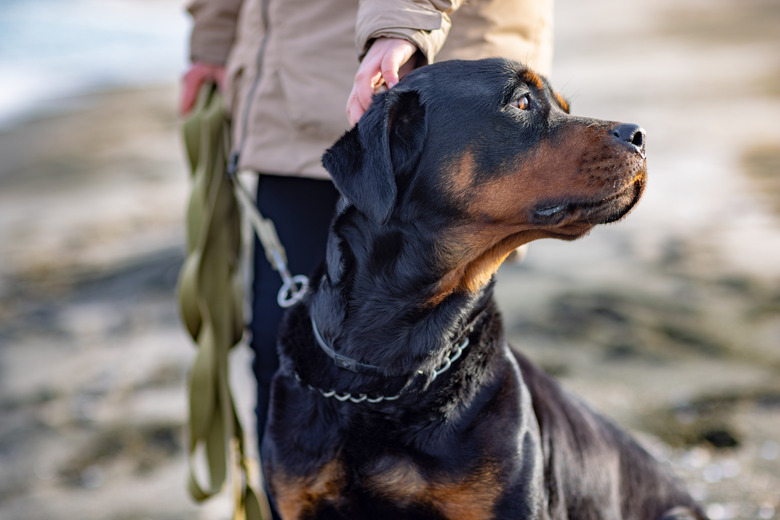Keloid Scars In Dogs
When a dog's skin sustains a lesion or bite, the body initiates a natural healing process. As part of this process, a protein called collagen is released to help close the wound and regenerate damaged tissue. This creates a scar. Scar tissue forms in almost all wounds except for the most minor cuts and scratches. While most types of scars are harmless, keloid scars are different.
Keloids can be irritating or even painful, and if your dog scratches at the scar, it could result in a secondary infection. Keloid scars can also be potentially malignant (cancerous) tumors. If your pet develops keloid scarring, you will want to visit your veterinarian to have it checked out.
What are keloid scars in dogs?
What are keloid scars in dogs?
A keloid scar, also called a hypertrophic scar, is a thick, raised overgrowth of collagen tissue. They are often shiny and firm to the touch and may have a flesh-colored or dark brown pigment. Keloid scars can look like large, hairless areas around the wound site. They can also look like nodules or masses under the skin and may be indistinguishable from other types of growths in dogs.
Keloid scarring frequently occurs in humans. Although it's not unusual for dogs to form collagen-containing lesions and nodules on the skin, keloid scarring is less common. If it does occur, it is important to have a veterinarian examine it. Keloidal scarring can indicate tumors, known as keloidal fibromas or fibrosarcomas, that require surgical removal and monitoring.
How keloid scars affect dogs
How keloid scars affect dogs
Most dogs will scratch at keloid scars because they are uncomfortable. Self-trauma can cause or exacerbate swelling and irritation. If the skin around the keloid scar opens, an infection may develop.
Keloid scarring can also indicate a malignant tumor, such as a keloidal fibromas or fibrosarcomas, due to an uncontrolled overgrowth of fibroblasts. Fibroblasts are the most prevalent cells in the body's connective tissues.
Keloid scars vs. other types of scars in dogs
Keloid scars vs. other types of scars in dogs
Keloid scars usually expand beyond the original wound site. Other scar types may change color or thickness but do not grow or extend beyond the original wound. Also, whereas most scars fade with time, keloid scars often reappear after removal.
Keloid scars are also different histologically, or in their microscopic structure. They contain thickened bundles of hyalinized collagen fibers that differentiate them from other collagen-based nodules and lesions. Hyalinization occurs when normal tissue deteriorates into a homogeneous, clear material. Also, unlike other scars, keloids have more inflammatory cells and often vascularize.
Keloid scar treatments for dogs
Keloid scar treatments for dogs
Scar treatment for keloids varies depending on whether it is benign or malignant. A veterinarian will need to examine the scar and likely take a biopsy of the area to determine if it is a keloidal fibrosarcoma. If the tissue is not cancerous, a veterinarian can remove portions of it. Complete excision is generally not recommended for benign scar tissue, as it increases the chance of the scar reoccurring.
The veterinarian may use corticosteroids, such as methylprednisolone acetate, to slow the scar's growth. These can be injected into the scar tissue. They may prescribe topical skin treatments as well to alleviate pain, inflammation, and irritation. While these interventions do not eliminate the keloid, they can reduce discomfort and the risk of infection. Your dog may need multiple treatments, as keloid scars tend to regenerate.
If the scar tissue is malignant, a veterinarian will need to remove it completely to stop the cancer from spreading. Keloidal fibromas and fibrosarcomas typically develop slowly. Early intervention by a veterinarian can improve the likelihood of successful treatment.
The bottom line
The bottom line
Scars of any kind can be uncomfortable and unsightly, but keloidal scars are not typical — they can be painful and even dangerous. If your dog has an unusual scar, nodule, or mass, it is important to have it examined by a veterinarian. Your dog's doctor will test the tissue to determine if it is cancerous and if so, they will remove it. Otherwise, they can partially remove the scar tissue and take measures to stop the keloid's growth and assuage your dog's discomfort.
References
- Sage Journals: Veterinary Pathology: Keloidal Fibromas and Fibrosarcomas in the Dog
- Wiley Online Library: Veterinary Clinical Pathology: Cytologic Appearance of a Keloidal Fibrosarcoma in a Dog
- National Library of Medicine: Veterinary Dermatology: Hypertrophic Scar in a Dog: Histological and Clinical Features

